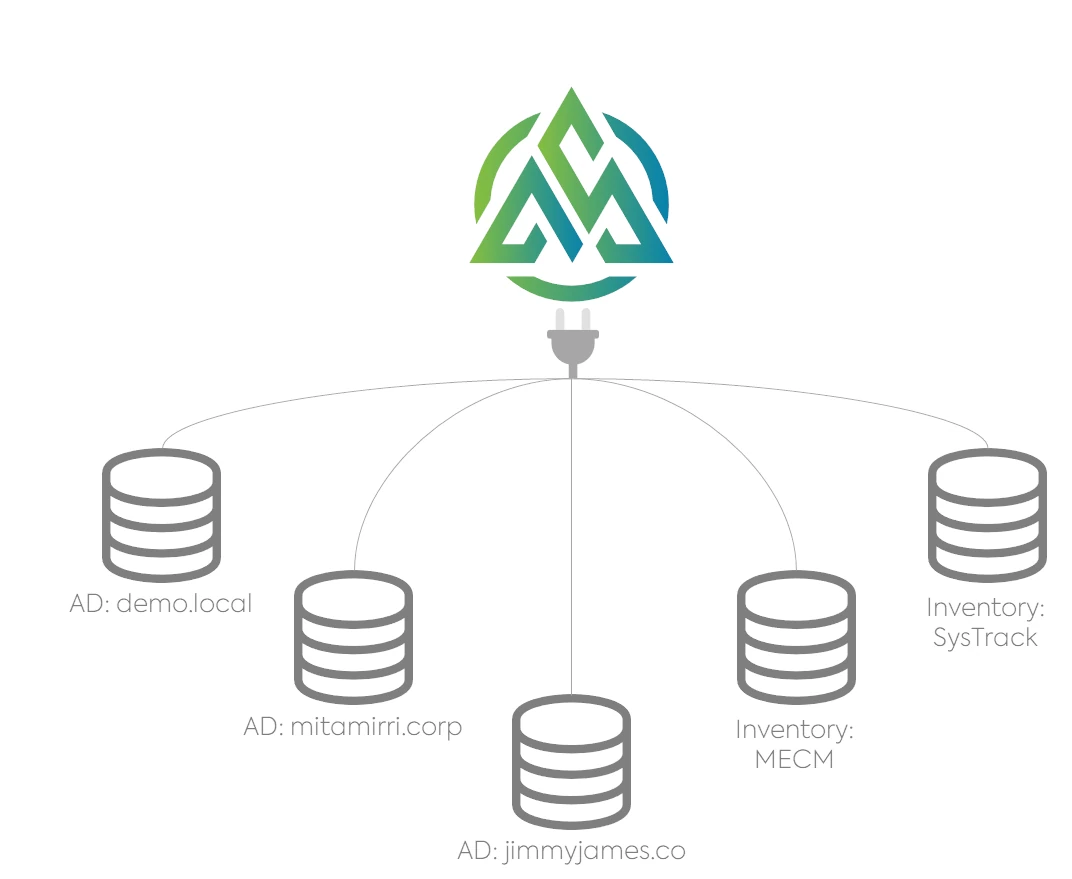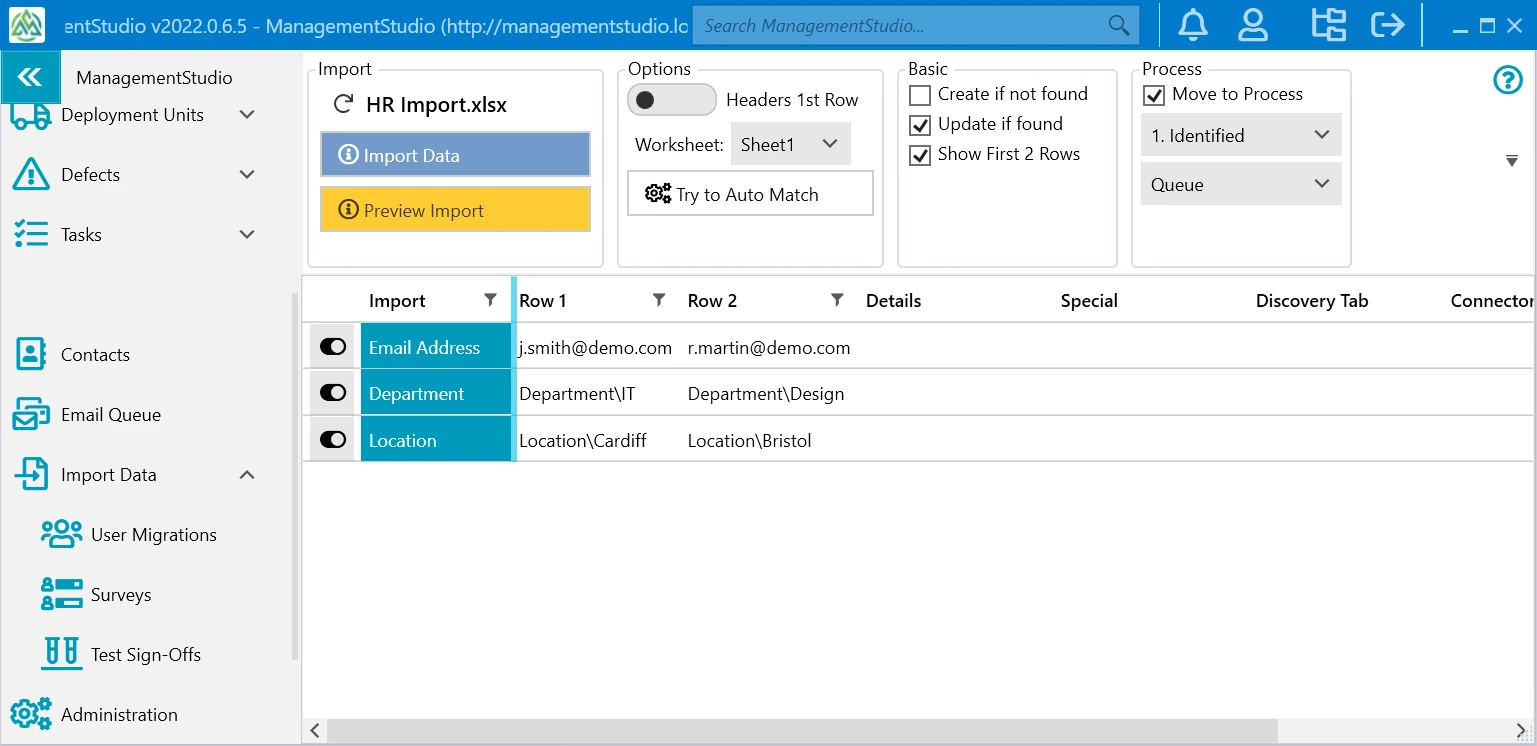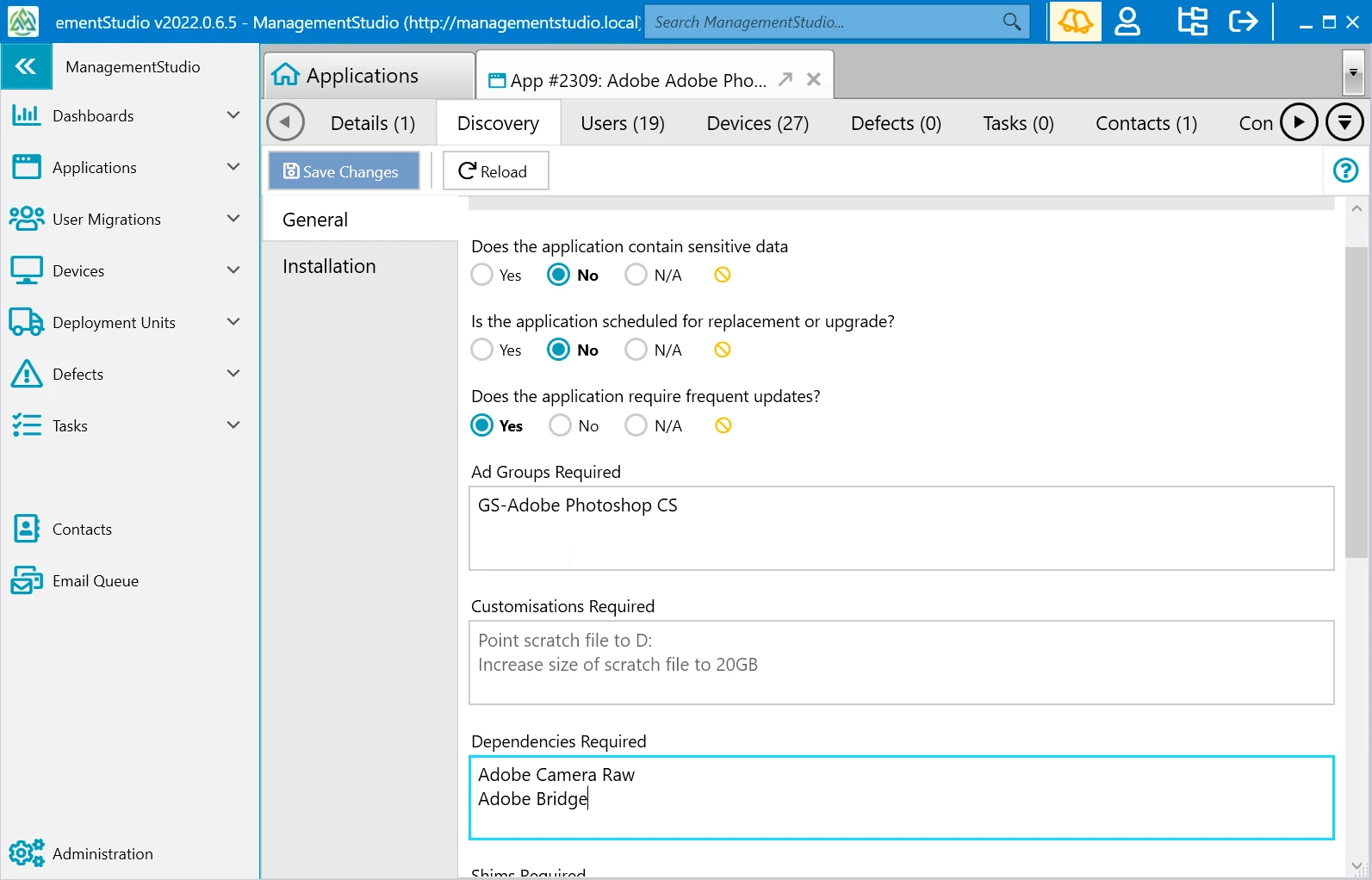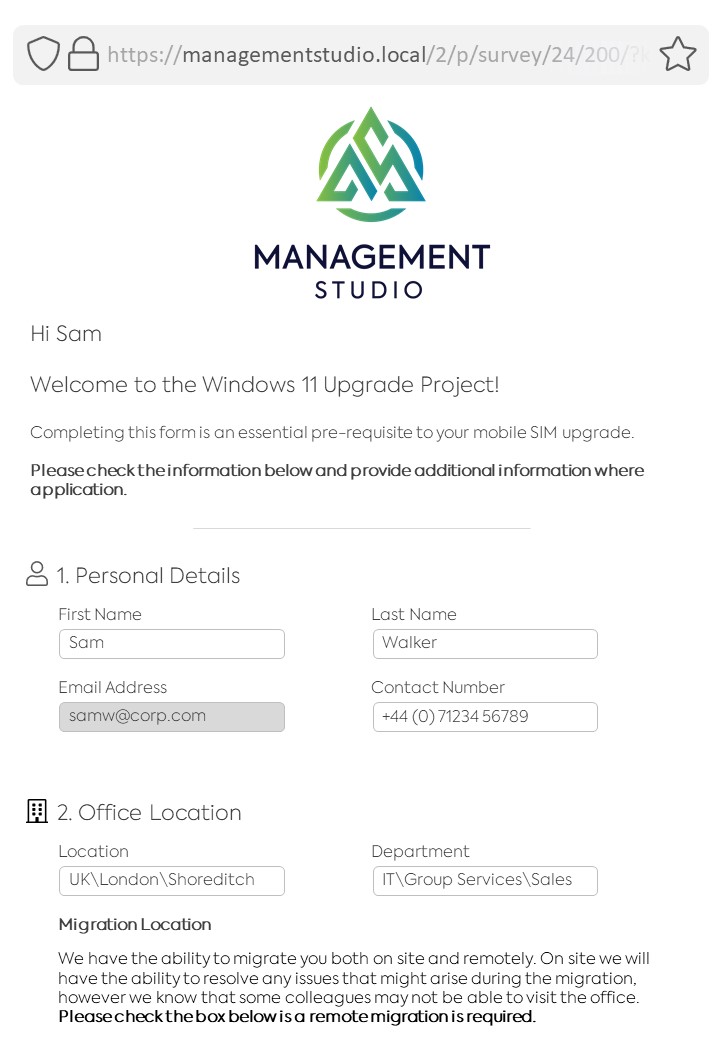Capture
Importing Data In ManagementStudio
Seamlessly connect with existing data sources to create a comprehensive baseline of your business. Track objects as they move through your project and operations, always knowing who is using what and where.
Multiple Sources, One Console
Create a Baseline
Many organisations have a wealth of data about their estate stored in different formats across a variety of systems. Although each silo will contain a snippet of information relevant to that system, delivering a new project or change to an existing service will require a broader picture of the estate to fully understand the current landscape and how that relates to the target environment. Manually bringing this together, tracking so many moving parts, maintaining the relationships and dependencies between the objects, and ensuring the most current information is shared with the wider team is a significant undertaking that consumes substantial resource and often introduces error.
ManagementStudio overcomes these challenges by directly integrating with existing systems, such as Microsoft Active Directory (AD) and Microsoft End Point Configuration Manager (MECM), to create a rich profile of users and assets within the business. Data points from each of the source systems are layered to create a contextual view of what users do, their place in the organisation, and how assets are utilised. And what’s more, ManagementStudio tracks changes to all objects as they happen to ensure everyone using the platform has current and relevant insight into the estate.
Supported DatA Sources
ManagementStudio supports multiple methods of importing data, supplementing automated sources with manual input to create a blended view of the estate. This provides flexibility to determine the most appropriate method of harvesting data:
- Connectors: Programmatically import data directly from supported inventory systems:
- Microsoft Active Directory (AD)
- Microsoft Azure AD / Entra ID
- Microsoft Endpoint Configuration Manager (MECM)
- Microsoft Intune
- Lakeside SysTrack
- Manual bulk data import
- Discovery
- Dynamic Forms
Using Connectors
Understanding the current environment before any planning takes place is crucial to a successful deployment. ManagementStudio uses Connectors to routinely talk directly to the source database, such as AD and MECM, to create a baseline of the estate as it is today and keep this view up-to-date and relevant. Connecting to existing data sources means that a wide range of detailed history is immediately available to ManagementStudio, and they provide incredibly rich inventory and usage data without installing an agent on client devices.
The Connector is responsible for importing information about individual objects, defining the relationship between different objects location and place within the business, and tracks any changes that occur. Using a Connector over other methods of data import has the following benefits:
- The import is automatic and is scheduled to update twice a day to ensure that any changes to staff or assets are captured
- Filters can be used to ignore objects that meet a defined criterion, for example, excluding service accounts in an AD import or only importing information about devices with a specific OS-type in a MECM
- The fields that are included in the import are easily extended in the ManagementStudio Administration section, enabling the Connector to collect custom information.
- If an object is deleted or disabled in the source data, the Connector will automatically archive the corresponding record in ManagementStudio
- Automatically create and maintain relationships with objects from multiple data sources, for example, linking an AD user to a device in MECM and corresponding mailbox in Microsoft Exchange
Without Connectors, it would be incredibly difficult and time consuming to manually create a daily view of the estate to the same level of accuracy and detail.
Manual Data Imports
In addition to automated data imports using Connectors, ManagementStudio also supports ad hoc manual bulk data imports from Excel Worksheet or a Comma Separated Values (CSV) file. This is ideal for data that changes in frequently or when a one-off import is required. For example, an HR extract is used to create the organisational structure and update employee locations within ManagementStudio.
ManagementStudio simplifies the import by:
- Automatically map the column headers to known fields in ManagementStudio where the names match
- Match records to corresponding ManagementStudio entries using a variety of unique identifiers
- Create new records and update existing entries
- Automatically move records to a particular process and Blueprint
- Enable the mapping configuration and import options to be saved for future use
In addition, access to the import feature is controlled by User Role Groups, which gives ManagementStudio administrators the ability to only import data for specific modules. For example, the application team would only have the option to import data for the Applications module.
Discovery
Not all data that is used in ManagementStudio is taken from existing business systems. Activities that are part of the workflow will also generate large amounts of information that will need to be centrally stored, for example:
- Details required for packaging such as location of the installation media and instructions, pre-requisites, application behaviour and post-installation activities
- A user’s hardware and software requirements
- Which users should have access to a particular application
- License and support agreements that are in place for specific assets
- Health and Safety information for each site or location
ManagementStudio’s Discovery feature allows the organisation to easily add new tabs and questions to ensure that all information relevant to that record is captured.
Discovery is supported in each of ManagementStudio’s core modules.
Dynamic Forms
End-users are often overlooked as a potential source of information, but input from your user base can positively impact the success of a project or change. Consider the following scenarios that most organisations will have encountered:
- Staff are required to work from home at short notice and laptops are to be shipped to their address
- An engineer will be sent to a colleague’s office to assist with a Windows upgrade
If the end-user doesn’t validate the information held about them in HR or Active Directory, the laptop might be sent to the wrong address, or the engineer attends the wrong office. Not only does this add unnecessary delay and cost to the workstream, but it also results in lost productivity and dissatisfaction for the end-user – ultimately creating negative perception towards the change.
To overcome this challenge, we created Dynamic Forms; an easy way for end-users to review the data held about them, and for IT to collect more information:
- Dynamic Forms are hosted on the ManagementStudio web portal and are accessed using any modern web browser
- A link to the form is sent to users by email, with follow-up email automatically sent if no response is received
- The forms support conditional fields giving the ability to display additional questions based on a response
- Dynamic Forms support HTML and Markdown out of the box, providing the ability to create rich, beautifully presented surveys
- Additional actions can be triggered when a form is submitted, for example, a user is added to the Windows 11 AD group once they have agreed to the IT acceptable usage policy
Control With Data
Learn how to use ManagementStudio’s reporting and auditing features to add context to business decisions, and how real-time data is used to trigger automation.




